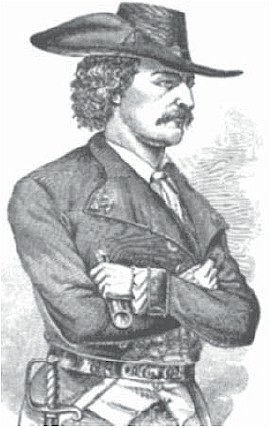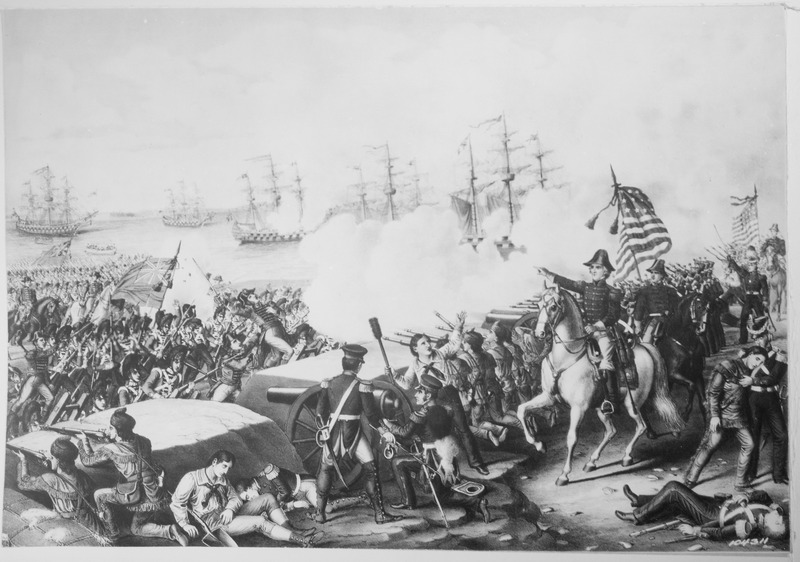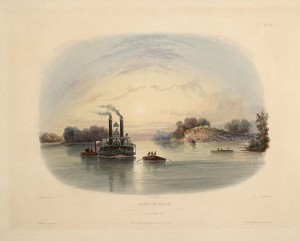Pirates of the Mississippi
Avast, me ‘earties!
Gather around for a tale of treachery, murder and wonder, and consider ye warned. For the sharp swift blade of the buccaneer’s sword wasn’t for those of the Caribbean alone…

Notorious pirate Jean Lafitte
When you hear the word pirate, you may envision Johnny Depp’s character, Captain Jack Sparrow, aboard the Black Pearl or recall stories of Yellow and Black Beard. You may possibly think about modern times and the misery brought about by pirates off the coast of Somalia. But have you ever thought about the Mississippi River and pirates? If not, you are missing out on some of the most interesting—and dangerous—chapters of river life.
Perhaps one of the most notorious pirates of the southern Mississippi was Jean Lafitte. He considered himself a privateer, but Jean and his brother Pierre ran a successful smuggling operation targeting Spanish ships and other pirates. Jean was of French descent, but in true pirate fashion, he showed allegiance to none and sailed under no country’s flag. He helped General Andrew Jackson fend off the British during the 1815 Battle of New Orleans, was offered British citizenship to betray the United States during the War of 1812, and spied for the Spanish during the Mexican War of Independence.

Battle of New Orleans, January 1815. Copy of lithograph by Kurz and Allison
Not as violent as some of their counterparts on the high seas, the Lafitte brothers would treat captives well and would even return ships to the original crew. Sailing in a classic schooner to approach ships, they would set up auctions in the swamps to sell stolen goods and were romanticized as modern-day Robin Hoods in the Delta and New Orleans. But they weren’t beloved by all. By selling stolen goods at a lower price, they took revenue away from New Orleans merchants and politicians, who sent a militia to disperse the events at Lake Barataria, south of New Orleans, in 1814. Pierre was arrested and jailed, while Jean continued the lucrative family business.
Early slave traders
Approached by the Spanish to act as spies during the Mexican War of Independence, the Lafittes traveled to Galveston, Texas, where they set up a pirate island called Campeche. They continued their pirating ways and worked several legal loopholes which allowed them to get involved in slave trading, even though the importation of slaves had been outlawed in the U.S. in 1818. This proved lucrative until several hardships fell upon the island. Some of Lafitte’s men captured an indigenous Karankawa woman and were killed by tribal members. But the pirates fought back and killed most of the men in the tribe. A few months later, a hurricane hit the island, destroying all but a few houses and ships. Jean Lafitte would bounce back and continue his ways until 1823, when he was killed during a battle in Honduras and buried at sea.
River pirates usually located themselves along isolated frontier settlements, which lacked adequate law enforcement. They stole livestock, cargo and slaves and would usually sink or sell the stolen flatboat, keelboat or raft. Pirates would lure passing boats by posing as farmers with goods to sell, pretend as if they were in trouble. They might even hire a woman to stand by the bank, calling out in distress. Those foolish enough to stop usually met an untimely, violent death.

Artist rendering of Cave-In-Rock showing flatboats and steamboats.
A main pirate hide-out was along the Ohio River at Cave-In-Rock in southern Illinois. Pirates came and went, but two would forever leave their mark. The Harpe Brothers, Michajah, aka “Big,” and Wiley, aka “Little,” were a particularly violent pair of river pirates— so violent that they’ve often been referred to as America’s first serial killers. (No reliable illustrations of the Harpe Brothers can be found)
James Hall, a Philadelphia native and judge in Shawneetown, Ill., during the 1820s, wrote the first histories about the “Bloody Harpes.” His introduction from his 1828 “Letters from the West” serves best for the story:
“Many years ago, two men named Harpe appeared in Kentucky, spreading death and terror wherever they went. Little else was known of them but that they passed for brothers, and came from the borders of Virginia. They had three women with them, who were treated as wives, and several children, with whom they traversed the mountainous and thinly settled parts of Virginia into Kentucky marking their course with blood.”
The Harpes were so nefarious, once tying a captive to a horse and forcing both over a cliff, that even the other pirates inhabiting the cave were disgusted. They were forced to strike out on their own, along with their many wives and children. More destruction was left in the brothers’ path. One particularly horrifying story recounts “Big” Harpe’s sadism when he killed an infant girl, whose crying he found annoying. Her vengeful father finally got justice when he and an angry hunting party found the brothers, fatally wounding “Big.” Stories are told that the father placed the head of Michajah on a stake overlooking Cave-in-Rock to warn others.
Now alone, Wiley “Little” Harpe traveled back to Cave-in-Rock under the alias “John Setton.” He was welcomed by Captain Samuel Mason, a Revolutionary Army veteran turned-pirate who terrorized slow-moving flatboats traveling from Memphis, Tenn., to Natchez, Miss., in the late 1700s to early 1800s. Caught in New Madrid, Mo., in 1803, the pirates turned on one another, but both were sent downriver to New Orleans for sentencing. During the trip, they managed to break out of irons, kill several guards and escape. A reward of $7,000 was offered for Mason, dead or alive. In true pirate fashion, Setton turned on Mason and brought his severed head to authorities to collect his reward. But he was recognized, caught, and sentenced to death by hanging in Greenville, Miss., in 1804.
Piracy began to quiet down along the Mississippi in the early 1820s as steamboat travel increased. Faster and more secure than their slow-moving counterparts, these large vessels posed higher risks to the pirates. As river piracy waned, new methods of terrorism flourished to the west with outlaws, bank robbers and renegades acting as the new big bad. — S.K.
Writer Sarah Koeppel is an archaeologist with the U.S. Army Corps of Engineers, Vicksburg District, where she works on prehistoric and historic sites, consults with Tribal Nations and ensures Corps compliance with cultural resources laws. Reprinted with permission from the Corps Our Mississippi publication.

Cave-In-Rock still exists today, waiting for it’s next explorer!
Join our
COMMUNITY
And Get a Free E-book!
When you sign up as a River Citizen you’ll receive our newsletters and updates, which offer events, activities, and actions you can take to help protect the Mississippi River.
You’ll also get our free e-book, Scenes From Our Mighty Mississippi, an inspiring collection of images featuring the River.
Step 1
Become a River Citizen
Yes! The River can count on me!
I am committed to protecting the Mississippi River. Please keep me informed about actions I can take to protect the Mississippi River as a River Citizen, and send me my free e-book!, Scenes From Our Mighty Mississippi!
Step 2
LEARN ABOUT THE RIVER
We protect what we know and love. As a River Citizen, you’ll receive our email newsletter and updates, which offer countless ways to engage with and learn more about the River. You can also follow us on Instagram, Facebook, X (Twitter) , and YouTube, where we share about urgent issues facing the River, such as nutrient pollution, the importance of floodplains and wetlands, and bedrock legislation such as Farm Bill Conservation Programs.
Step 3
Take Action
There are many ways you can jump in and take action for a healthy Mississippi River. Our 10 actions list includes simple steps you can take at any time and wherever you are. Check out our action center for current action alerts, bigger projects we are working on, and ways to get involved.
